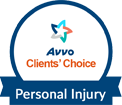There are many similarities between bus accident lawsuits and truck accident cases. For example, they are both serious and can result in severe injuries or fatalities. However, there are also differences of which you or your personal injury attorney should be aware.
Buses are used for public transportation, while trucks are used for commercial purposes such as shipping goods. So, California has specific regulations and safety requirements for buses and trucks that can affect the outcome of an accident claim. For example, bus companies are subject to strict oversight by government agencies, while trucking companies are subject to federal regulations.
Mostly, bus accidents involve government entities, as public transportation agencies own and operate many buses. On the other hand, truck accidents typically involve private companies or owners. This can greatly affect the liability and insurance coverage in the event of an accident. For example, a government entity may have sovereign immunity limiting the compensation you could recover in a lawsuit.
In addition to these differences, this article aims to provide a comprehensive overview of the key distinctions between bus accident lawsuits and truck accident cases in California, including differences in the vehicles involved, parties involved, and legal process. This information will help you understand the unique considerations of each type of case and how it could affect your accident case.
Buses Have Different Regulations And Safety Requirements
Among the few ways bus accident lawsuits differ from truck accident cases in California are regulations and safety Requirements.
How are Buses Different from Trucks?
These two vehicle types differ in size. Many buses are larger and heavier than trucks, which can impact the severity of injuries sustained in an accident. It is more difficult to maneuver and more likely to cause severe damage/ injuries in a crash.
Additionally, the size difference can make bus drivers harder to see other road users on the blindspots, contributing to accidents. Also, California buses are used for public transportation, while trucks are used for commercial purposes such as shipping goods.
Buses Have Different Safety Regulations
There are different regulations and safety requirements for buses and trucks. California has specific regulations and safety requirements for buses and trucks that can affect the outcome of an accident case. For example, bus companies are subject to strict oversight by government agencies, while trucking companies are subject to federal regulations. Also, buses are required to have seat belts for all passengers, while trucks are not.
The following are safety procedures that the government requires bus companies to follow:
- Regular maintenance and inspections: All buses operating in California must undergo regular inspections to ensure they are in good working condition. This includes check-ups on brakes, tires, and other safety-critical systems.
- Driver qualifications: Bus drivers in California must have a commercial driver's license (CDL) and pass regular physical exams to ensure they can drive. They also have to follow the hours of service regulations to prevent fatigue.
- Passenger safety: Buses must be equipped with seat belts, emergency exits, and other safety features to protect passengers in the event of an accident.
- Surveillance cameras: Many buses in California are equipped with surveillance cameras to record the interior and exterior of the vehicle. This footage can be used to monitor driver behavior and investigate accidents.
- Emergency training: Bus companies must provide emergency training to their drivers and staff to ensure they are prepared to handle emergencies.
- Compliance with federal regulations: California bus companies must comply with federal regulations set by the Federal Motor Carrier Safety Administration (FMCSA), which include, but are not limited to, drug and alcohol testing, vehicle maintenance, and driver qualifications.
The Differences in Insurance Coverage and Liability
Parties involved in Bus Accidents?
Another difference between bus accident lawsuits and truck accident cases in California is the type of parties involved. Under common carrier law, bus accidents often involve government entities, as many buses are owned and operated by public transportation agencies such as city bus systems or school districts. On the other hand, truck accidents typically involve private companies. This can greatly affect the liability and insurance coverage in the event of an accident.
When a government entity is involved in a bus accident, the legal process can be different than in a case involving a private company. Government entities have sovereign immunity, which can limit the amount of damages that can be recovered in a lawsuit. Additionally, the process for filing a claim against a government entity may be different and have stricter deadlines.
The Common Carrier Law
In California, the 'Common Carrier' law is a legal concept that applies to public transportation companies, such as bus and train companies. Under this law, common carriers have a higher duty of care towards their passengers than other companies.
This means that they are held to a higher safety standard and must take extra precautions to ensure the safety of their passengers. For example, if a bus driver is found to be negligent in an accident, the bus company could be held liable for injuries or deaths that occur as a result, even if the driver was at fault.
Although the common carrier may have a higher duty of care, carelessness could cause an accident. For example, imagine standing in a public bus when it swerves or stops abruptly, causing you to be flung to the ground and suffer injuries. The fact that you were injured because the bus veered or stopped abruptly does not prove that the driver was careless.
Another example where the bus driver cannot be held accountable is when you unexpectedly dashed into the street when the bus was moving reasonably and safely. However, the bus driver will probably be deemed negligent if the accident happened while chatting with a passenger.
These examples show the increased responsibility for common carriers. At times, bus drivers converse with passengers while driving. But the common carrier law states that public bus drivers have a stronger duty of care to their passengers than other drivers. Therefore, bus drivers are required to drive more cautiously than other drivers. Even if it could be careless, bus drivers still speak with passengers but are not permitted. Bus drivers cannot be even the slightest bit careless.
Insurance Coverage and Liability
Another important difference between bus accident lawsuits and truck accident cases is insurance coverage and liability. Bus accident claims could be covered by public liability insurance, while truck accident claims may be covered by commercial trucking insurance.
There are several key differences between California public liability insurance and commercial trucking insurance.
- Coverage: Public liability insurance is designed to protect government entities and public transportation companies, such as city bus systems or school districts, from liability in the event of an accident. On the other hand, commercial trucking insurance is designed to protect trucking companies and their drivers from liability in the event of an accident.
- Policy limits: Public liability insurance policies typically have lower policy limits than commercial trucking insurance policies due to the sovereign immunity of government entities. This means that the amount of compensation that can be recovered in a personal injury claim against a public entity could be capped at a lower amount than in a claim against a private company.
- Regulations: Public transportation companies are subject to strict oversight by government agencies and must comply with specific rules and safety requirements. On the other hand, trucking companies are subject to federal regulations and safety requirements.
- Type of accidents: Public liability insurance is primarily used for accidents involving public transportation, such as buses, trains, and subways, while commercial trucking insurance is issued mainly for accidents involving commercial trucks, such as semi-trucks and delivery trucks.
- Nature of Business: Public liability insurance primarily covers businesses providing public transportation services and government entities, while commercial trucking insurance primarily covers businesses engaged in commercial transportation.
The Legal Process In Bus Accident Lawsuits Is Different From Truck Accidents
Regarding the legal process, one of the main differences between bus accident lawsuits and truck accident cases in California is jurisdiction and venue. Jurisdiction refers to the authority of a court to hear a case, and venue refers to the specific location where the case will be heard.
In a bus accident lawsuit, the jurisdiction and venue may be where the accident occurred, while in a truck accident case, it may be where the trucking company is based. It's important to understand the jurisdiction and venue to file a case in the right court.
Claim Procedure And Statute Of Limitations
Another important difference in the legal process is the statute of limitations, the amount of time a person has to file a claim. Under California personal injury law, the statute of limitations for personal injury and wrongful death claims is two years. However, there may be different time limits for claims against government entities. It is important to be aware of the statute of limitations to file a claim within the allotted time frame.
Since public transportation providers fall under the purview of state or municipal bodies, any claims made against them are subject to certain state statutes (often referred to as State Tort Claims Acts). There will always be time and notification constraints on bringing injury claims against a public transit provider or government agency. State-by-state variations in these deadlines can result in the following:
- A brief period within which you must write to the public transportation firm detailing the specifics of your accident.
- A shorter statute of limitations for legal action against the public transportation provider.
Evidence You Must Present In a Bus Accident Claim
The evidence and expert testimony used in bus accident lawsuits and truck accident cases can also differ. For example, electronic data from a truck's "black box" may be used as evidence in a truck accident case but may not be available in a bus accident case.
Additionally, different experts may be needed to testify in each type of case. For example, a bus accident case may require the testimony of a transportation safety expert, while a truck accident case may require the testimony of a trucking industry expert.
Here are some crucial pieces of evidence that can help support your claim:
- Bus maintenance and inspection records: These records can show whether the bus was properly maintained and if any defects or issues were present during the accident.
- Surveillance footage: Many buses are equipped with cameras that record the vehicle's interior and exterior. This footage can provide valuable insight into how the accident occurred and who may be at fault.
- Driver's logbook: Bus drivers must keep a logbook of their service hours and comply with federal regulations. This can be used as evidence to show if the driver was fatigued or overworked during the accident.
- Witness statements: Eyewitness accounts can provide valuable information about the accident and can help establish fault.
- Accident reports: The police report can provide important details about the accident and be used as evidence in your claim.
- Medical records: If you have been injured in a bus accident, your medical records can be used to show the extent of your injuries and the cost of your medical treatment.
Differences in settlement and trial procedures
The settlement and trial procedures may also differ between bus accident lawsuits and truck accident cases. Bus accident cases may be settled quickly through mediation or arbitration, while truck accident cases may be more likely to go to trial. Understanding the settlement and trial procedures can help prepare for the legal process and the potential outcome of the case.
1. Filing a claim: The first step in the process is to file a claim against the liable party, the bus company or driver. This is typically done through a personal injury attorney who can help you gather and present evidence to support your claim.
2. Negotiations: Once the claim has been filed, the liable party's insurance company will investigate their liability level. This is often followed by negotiations to reach a settlement agreement. This is where both parties try to reach an agreement on the amount of compensation that will be paid to the victim.
3. Settlement: If a settlement can be reached, the case will be settled, and the victim will receive compensation. A settlement can be faster and less expensive than going to trial, but it is important to consider that the settlement amount might be less than you would have received if the case went to trial.
4. Trial: The case will go to trial if a settlement cannot be reached. A trial is a legal proceeding where both parties present evidence and arguments to a judge or a jury, who will decide the case's outcome. This process can be time-consuming and expensive, but it may result in a higher compensation award.
5. Appeal: If either party is dissatisfied with the trial's outcome, they have the right to appeal the decision to a higher court.
Limits on Damages in Public Transportation Injury Claims
In California, when a public entity such as a city bus system or school district is involved in a bus accident, there may be limits on the damages that can be recovered in a personal injury claim. This is because of the concept of sovereign immunity, which limits the amount of damages that can be recovered from government entities.
For example, under California Government Code Section 911.2, the maximum damages that can be recovered in a personal injury claim against a public entity are $250,000 per person and $500,000 per incident. This means that if multiple people are injured in a bus accident, the total amount of damages that can be recovered is capped at $500,000.
Additionally, under California Government Code Section 905, there is a 45-day claim filing requirement for personal injury claims against public entities. This means individuals have 45 days to file a claim after an accident; otherwise, the claim will be barred.
You should note that these limits apply only to personal injury claims against public entities, not private bus companies. In cases involving private bus companies, damages' limits may differ, and the claim filing deadline may be longer, for example, two years.
Find a Personal Injury Attorney Law Near Me
The above sections discuss the differences between bus accident lawsuits and truck accident cases under California personal injury law. These differences include the vehicles involved, the parties involved, and the legal process.
These sections state that buses are mainly used for public transportation, while trucks are used for commercial purposes. Buses are larger and heavier than trucks, making them more difficult to maneuver and more likely to cause severe damage in a crash.
It is important to understand the unique considerations that come with each type of case and how it may affect their legal options. An experienced attorney can help navigate these complexities and achieve the best possible outcome. Understanding these distinctions is crucial if involved in a bus or truck accident in California, as it can greatly impact your legal options and potential recovery.
At The Personal Injury Attorney Law Firm, we do not leave any stone unturned when protecting your rights and pursuing the compensation you deserve. Contact us at 800-492-6718 for your cost-free case review.
 800-492-6718
800-492-6718







